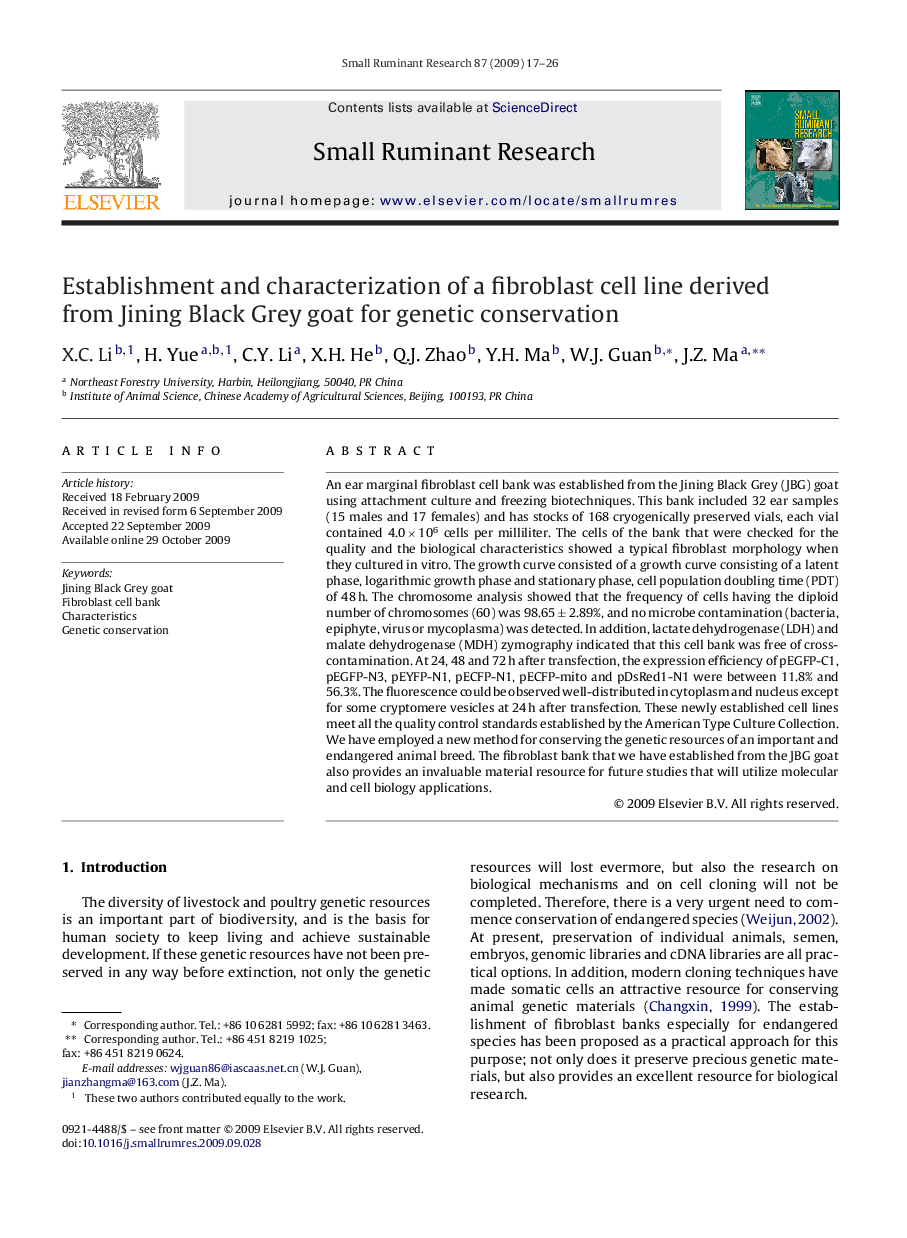| Article ID | Journal | Published Year | Pages | File Type |
|---|---|---|---|---|
| 2457672 | Small Ruminant Research | 2009 | 10 Pages |
An ear marginal fibroblast cell bank was established from the Jining Black Grey (JBG) goat using attachment culture and freezing biotechniques. This bank included 32 ear samples (15 males and 17 females) and has stocks of 168 cryogenically preserved vials, each vial contained 4.0 × 106 cells per milliliter. The cells of the bank that were checked for the quality and the biological characteristics showed a typical fibroblast morphology when they cultured in vitro. The growth curve consisted of a growth curve consisting of a latent phase, logarithmic growth phase and stationary phase, cell population doubling time (PDT) of 48 h. The chromosome analysis showed that the frequency of cells having the diploid number of chromosomes (60) was 98.65 ± 2.89%, and no microbe contamination (bacteria, epiphyte, virus or mycoplasma) was detected. In addition, lactate dehydrogenase (LDH) and malate dehydrogenase (MDH) zymography indicated that this cell bank was free of cross-contamination. At 24, 48 and 72 h after transfection, the expression efficiency of pEGFP-C1, pEGFP-N3, pEYFP-N1, pECFP-N1, pECFP-mito and pDsRed1-N1 were between 11.8% and 56.3%. The fluorescence could be observed well-distributed in cytoplasm and nucleus except for some cryptomere vesicles at 24 h after transfection. These newly established cell lines meet all the quality control standards established by the American Type Culture Collection. We have employed a new method for conserving the genetic resources of an important and endangered animal breed. The fibroblast bank that we have established from the JBG goat also provides an invaluable material resource for future studies that will utilize molecular and cell biology applications.
